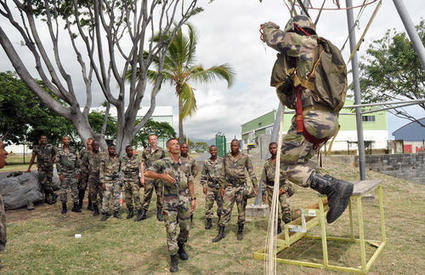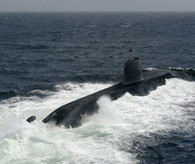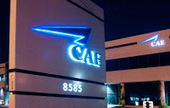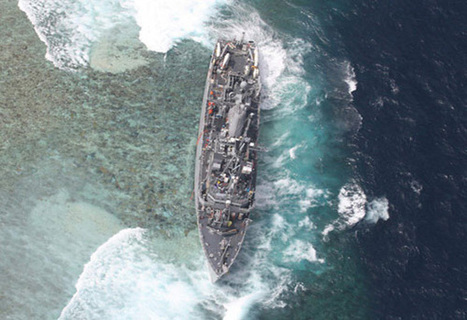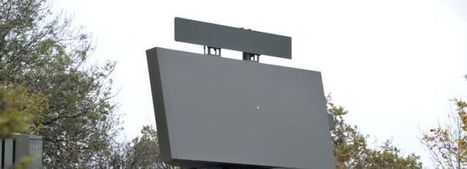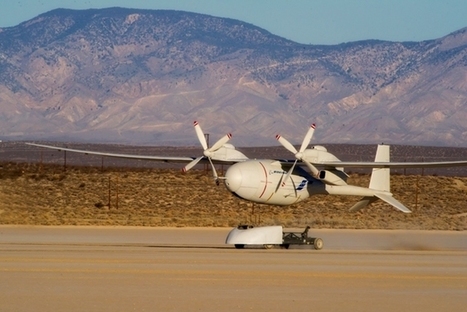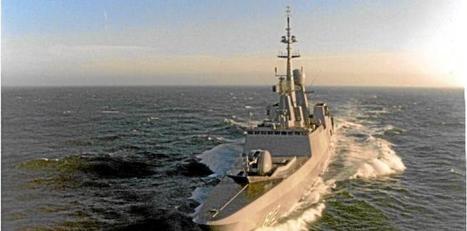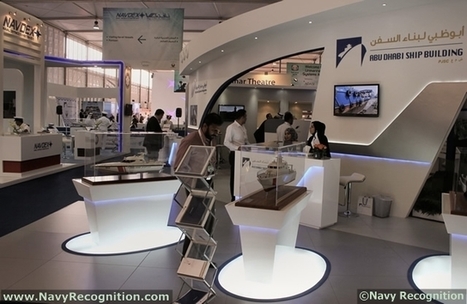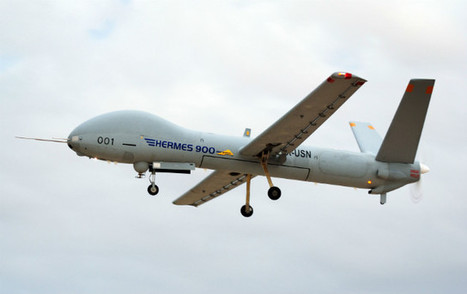 Your new post is loading...
 Your new post is loading...

|
Scooped by
Romain
February 28, 2013 3:59 AM
|
US based Sierra Nevada Corp. and Brazilian Embraer Defense and Security will deliver 20 A-29 Super Tucano turboprop powered light air support aircraft to the Afghan Afghan Air Force, under a contract worth US$427 million awarded yesterday by the USAF. The contract also covers associated maintenance and training for the Afghan air force. Under this contract, 20 aircraft are scheduled to be delivered to operational air bases in Afghanistan beginning in the summer of 2014. Deliveries will continue through 2015 at a rate of two aircraft per month. The A-29 will be equipped for light attack missions, to conduct advanced flight training, surveillance, close air support and air interdiction missions. The contract requirements called for a known, predominantly stable design due to austere conditions, the possibility for immediate combat needs and the substantial learning curve of the potential partner nation pilots. Only two aircraft models were considered – the A-29 Super Tucano and AT-6 from Hawker Beechcraft. In December 2011 the USAF awarded this contract worth over $355 to Sierra Nevada Corp; however, the Air Force issued a stop-work order in February 2012 and terminated the contract in March 2012 during the Hawker Beechcraft Court of Federal Claims protest and after an internal Air Force investigation turned up documentation deficiencies in the source selection paperwork. As part of the Air Force’s corrective action, a new LAS source selection team was appointed, source selection training was reinforced across the Air Force acquisition community, and oversight alignment and effectiveness was improved. This action has cost the taxpayer extra $72 million. (DEW line has more analysis here) The Air Force restarted the LAS acquisition as quickly as possible in order to be responsive to the Afghan requirement and issued an amended request for proposals in May 2012. Apparently, with competitor Hawker Beechcraft crippled under Chapter 11 (from which it emerged earlier this month), Sierra Nevada could have a better understanding of the competitor’s offer thus it could safely up its offer without risking loosing the bid. One of the stronger points for Hawker Beechcraft in promoting the AT6 was the positioning of their product as US made. The Brazilian designed aircraft will be built in Jacksonville, Florida. The LAS contract will support more than 1,400 American jobs, reflecting both the large U.S. supplier base – more than 100 companies will supply parts and services for the A-29 Super Tucano – and new jobs that will be created by SNC and Embraer. Embraer will create new high-tech jobs at its production facility in Jacksonville, adding to the 1,200 people Embraer currently employs in the United States, and new jobs at SNC will add to its U.S. workforce of 2,500 people.

|
Scooped by
Romain
February 27, 2013 11:15 AM
|
Les armes de nouvelle génération doivent représenter 30% des armements russes d'ici 2015 et entre 70% et 100% d'ici 2020, a déclaré mercredi à Moscou le président russe Vladimir Poutine. "La Russie doit créer un système de recherche et de conception de projets prometteurs dans le domaine des technologies militaires ces deux prochaines années", a indiqué M.Poutine lors d'une réunion élargie du collège du ministère russe de la Défense.

|
Scooped by
Romain
February 27, 2013 8:44 AM
|
Le 2e régiment de parachutistes d'infanterie de marine (2e RPIMa) a accueilli au mois de janvier 2013 une délégation d’une quarantaine de militaires malgaches du 1er Régiment de Force d'Intervention (RFI) dans le cadre d'un détachement d'instruction opérationnelle (DIO). D'une durée de 3 semaines, il visait deux objectifs : le perfectionnement des missions d’infanterie et la formation parachutiste. La formation infanterie (combat au niveau groupe), encadrée par un détachement de la 1ère compagnie, s'est déroulée du 14 au 18 janvier au Camp Lieutenant Paoli, dans la Plaine des Cafres. La formation au brevet parachutiste s’est quant à elle déroulée du 21 au 30 janvier avec une phase d’instruction au sol à la caserne Chef de bataillon (CBA) Dupuis, suivie de cinq sauts sur la zone de Golf à l’Etang-Salé. L’implication et la motivation des stagiaires associée au savoir-faire des instructeurs du 2e RPIMa a permis de breveter l’ensemble de la promotion. La cérémonie de remise des brevets a eu lieu dans le quartier CBA Dupuis à Pierrefonds le mercredi 30 janvier à l’issue de cinq sauts à ouverture automatique. La cérémonie était présidée par le chef de corps du 2e RPIMa, le colonel Vincent Alexandre et le commandant en second du 1er RFI. La formation constitue l’un des principaux volets de la coopération militaire mise en œuvre par les FAZSOI. Elle constitue un appui important au développement des capacités opérationnelles malgaches. Elle vise notamment à aider les forces armées malgaches à s’engager dans des opérations de maintien de la paix sur sollicitation de l’Union africaine et de l’ONU. A ce titre, les FAZSOI conduisent régulièrement des détachements d’instruction opérationnelle au profit du 2e RFI de Diégo Suarez.

|
Scooped by
Romain
February 27, 2013 5:00 AM
|
Un grand pas a été franchi dans la formation des pilotes de l’armée de l’air sur A400M. Du 04 au 22 février 2013, huit aviateurs de la Multinational Entry into Service Team (MEST), équipe de marque du centre d’expériences aériennes militaires (CEAM) chargée de réceptionner l’A400M, ont effectué une phase initiale de formation au pilotage à l’Airbus Training Center de Toulouse. Composé de cours théoriques et de mises en pratiques sur simulateurs, ce premier apprentissage avait pour objectif de familiariser les pilotes de l’armée de l’air à la philosophie des cockpits qui équipent les avions de la «famille Airbus» dont fait partie l’A400M. Ces huit aviateurs seront les premiers à évoluer aux commandes de l’A400M dans quelques semaines. «Nous sommes très fiers de participer à ces premiers travaux, confie le lieutenant-colonel Paul Creuset, commandant en second de la MEST. C’est une étape importante. Il s’agit d’une première concrétisation, annonçant l’arrivée du nouvel avion de transport de l’armée de l’air, première étape devant conduire à sa mise en service opérationnel.» Durant les prochaines semaines, les aviateurs approfondiront leurs connaissances de l’A400M au cours de formations se déroulant sur les sites d’Airbus à Toulouse et à Séville (Espagne). Après une première phase axée sur l’apprentissage des systèmes de l’avion, ce personnel navigant du CEAM apprendra les nombreuses procédures de pilotage de l’avion sur simulateur, avant de procéder à la prise en main de l’appareil par une série de premiers vols. «La simulation joue un rôle central dans l’instruction au pilotage sur un nouvel appareil, explique Stéphane Drouot, instructeur à l’Airbus Training Center à Toulouse. Les cabines de simulation (Full Flight Simulator) permettent une progression rapide des pilotes grâce à leur réalisme. Montée sur vérin, la plateforme reproduit très fidèlement les sensations d’accélération ou de virage.» «Malgré la différence de génération entre certains appareils en service dans l’armée de l’air et l’A400M, l’adaptation est rapide, explique le lieutenant-colonel Olivier Luneau, pilote de C130 de la MEST. Nous devons encore progresser dans le cursus de formation et nous avons hâte de passer aux commandes de cet avion à la pointe des évolutions technologiques.» Dès cette semaine, les huit aviateurs sont à Séville pour y poursuivre leur formation théorique.

|
Scooped by
Romain
February 27, 2013 4:33 AM
|
En 2014, l'armée de l'air russe recevra une version spéciale du Su-25 destiné à détruire et à contourner les systèmes de défense antiaérienne, écrit mardi le quotidien Izvestia. Une source de l'état-major de l'armée de l'air a déclaré que les essais de la nouvelle mouture du Su-25 devraient être achevés en mai prochain, après quoi sa production en série pourra être lancée.
"Cette version est capable d'identifier et d'éliminer des systèmes de défense antiaérienne aussi puissants que les Patriot américains, dont plusieurs unités ont été projetées en Turquie en raison de la guerre civile en Syrie", a-t-il déclaré.
Seuls les Etats-Unis disposent pour l'instant d'avions capables d'éliminer les systèmes de défense antiaérienne le F-16CJ Wild Weasel et le EF-18 Growler. Leur tâche consiste à supprimer la défense antiaérienne de l'ennemi sans pénétrer dans son rayon d'action, tandis que le nouveau Su-25 pourra agir à l'intérieur de cette zone en attaquant les systèmes sol-air et d'autres cibles terrestres.
Le Su-25 blindé et équipé de systèmes radar de bord, même dans sa version la plus performante, reste vulnérable face à la défense antiaérienne moderne. C'est pourquoi le nouvel avion d'assaut est équipé d'un système spécial muni d’antennes placées sous le revêtement, qui détectent la direction du rayon et classent le type de source.
L'avion sera également muni d'un système de détection des rayons laser et infrarouges et d’un système d'aveuglement des ogives guidées dans le spectre infrarouge. Tous les systèmes de bord sont intégrés dans un complexe commun et l'ordinateur prend automatiquement sa décision en fonction de l'information reçue. Tout cela permettra à l'avion d'assaut de dominer dans la zone de défense antiaérienne de l'ennemi, grâce à l'envoi d'ondes de brouillage radio et infrarouges.
D'où sa vocation tactique et stratégique à prendre la tête des groupes d'avions d'assaut ou de bombardiers classiques. Mais il pourra également agir seul.
L'expert indépendant Anton Lavrov confirme que la nouvelle version du Su-25 doit avoir un système d'autodéfense bien plus performant et être équipé de missiles antiradars modernes.
La source de l'état-major souligne que les Patriot américains ne sont pas les seuls ennemis du nouveau Su-25. Mais l'armée de l'air russe ne peut pas ignorer leur apparition en Turquie. Les Etats-Unis, les Pays-Bas et l'Allemagne ont fourni six Patriot à leur allié de l'Otan au début de l’hiver, déployés au sud et au sud-est du pays, près de la frontière syrienne.

|
Scooped by
Romain
February 27, 2013 4:07 AM
|
Thales UK is to supply its Sonar 2076 fully integrated search-and-attack submarine sonar system to BAE Systems for use on new British vessels. The submarines, the sixth and seventh Astute class vessels of the British navy, are being built by BAE Systems Maritime-Submarines in Cumbria. "Thales is proud to be supplying Sonar 2076 for all seven Astute class submarines," said Phil Naybour, head of Thales UK's naval business. "This successful program reflects the skill and dedication of our teams ... and also the close support and cooperation we have received from BAE Systems and the Ministry of Defense." The sonar system to be supplied will include both inboard and outboard bow, fin, intercept and flank arrays and inboard processing equipment. "BAE Systems is pleased to award Thales UK these important contracts for the sonar systems for the sixth and seventh Astute class submarines," said Ian Hawkes, head of Combat Systems, BAE Systems Maritime-Submarines. "Placing these contracts not only continues a well-established and enduring relationship with Thales UK, it also helps the submarine enterprise to meet the submarine program affordability challenge by obtaining economy of scale through batch procuring the sonar." Thales said its involvement with the Astute class building program is not limited to sonar gear. It also supplies two non-hull penetrating CM010 optronic masts, electronic support systems and communications and emergency buoys.

|
Scooped by
Romain
February 27, 2013 2:19 AM
|
Airbus Military aircraft expects the type certification of the A400M transport and refueling aircraft before the middle of 2013 after the aircraft completed cold weather trials in Canada earlier in February. Ian Elliot, Airbus Military’s vice-president defence capability, said at the Australian International Airshow on 26 February that the company expected to deliver four aircraft this year, three to France and one to Turkey, and was set to ramp up production. The company is expecting to manufacture seven aircraft in 2014, 21 in 2015 and finally reach a full manufacturing rate of 30 per year in 2016. 'There will be a marked increase in export activity on all continents as manufacturing speeds up over the next 18 months,' he said. 'There are opportunities in Australia, look at the UK Royal Air Force which also flies C-130Js and C-17s like the Royal Australia Air Force and is taking A400Ms. 'I’m not going to suggest Australia will sign up this week but [as the aircraft flies] people will see its versatility and they will take an interest. We are confident we can sell 400 aircraft [and] there is room in the manufacturing schedule to accommodate this.'

|
Rescooped by
Romain
from Newsletter navale
February 27, 2013 2:17 AM
|
La flotte russe de la Baltique éprouverait des difficultés à localiser les sous-marins disposant d'une propulsion à hydrogène. La marine russe a commandé une étude pour la construction d'un bâtiment spécialisé dans la traque des sous-marins disposant d'une faible signature acoustique. La flotte de la Baltique éprouverait en effet des difficultés à localiser les submersibles dotés d'une propulsion à hydrogène, comme ceux allemands de type 212/214. Selon le commandant en chef de la Marine russe, l'amiral Viktor Tchirkov, le bâtiment devrait être mis en service en 2017. Selon Izvestia, le bâtiment pourrait être construit à partir de la coque de la frégate Touman (Projet 11540), mise sur cale en 1993 au chantier naval Yantar (Kaliningrad) et jamais achevée. Toutefois, ni la constitution du cahier des charges, ni le financement du projet n'ont été pour le moment budgetés. La marine a seulement déclaré qu'elle souhaitait doter le futur "chasseur" des meilleurs technologies de détections et des meilleurs armements ASM. A ce jour, l'Institut Krilov (Saint-Pétersbourg) a toutefois reçu un ordre du Ministère de la Défense pour travailler sur le développement de la coque et des système embarqués. Les premiers documents doivent être présentés au ministère à la fin de l'année 2013 pour approbation. L'Allemagne, avec sa solide expérience dans les constructions des sous-marins d'attaque à propulsion classique, représente aujourd'hui un défi stratégique en mer Baltique avec la construction des submersibles de type 212/214 et leur propulsion AIP. Selon Izvestia, la flottille allemande stationnée à Kiel dispose aujourd'hui de 5 corvettes modernes, 5 submersibles de type 212 et 10 petits navires lance-missiles. Enfin, 15 frégates sont basées à Wilhemshaven. L'amiral Viktor Tchirkov a par ailleurs précisé que le futur bâtiment doit pouvoir aussi bien mener des missions de lutte ASM que mettre en oeuvre des missions d'appui pour des task force déployées sur les côtes. En outre, son sonar doit être capable de traquer les submersibles malgré les sauts de température présentées par les différentes couches d'eau. Lorsque le Ministère russe de la Défense aura approuvé le projet, un appel d'offre sera lancé pour la fourniture des équipements. Probablement début 2014. Source : Izvestia
Via Patrick H.

|
Scooped by
Romain
February 26, 2013 11:00 AM
|
Today at the Avalon Australian International Air Show, CAE announced it has signed a contract to provide the Royal New Zealand Air Force with a Beechcraft King Air 200 ProLine 21 CAE SimfinityTM Virtual Simulator (VSIM) classroom and B200 Computer-Based Training (CBT) in support of the Interim Advanced Pilot Training Capability (IPTC) project. Under terms of a five-year lease that includes an additional five-year option, CAE will install and support the CAE Simfinity VSIM classroom for the Beechcraft King Air 200 at RNZAF Base Ohakea. "The simulation services provided by CAE will play a key role in modernising the training of RNZAF pilots under the IPTC program," said Air Vice-Marshal Peter Stockwell, RNZAF Chief of the Air Force, The CAE Simfinity VSIM is part of the comprehensive suite of CAE Simfinity training media that leverages full-fidelity simulation software to provide a fully integrated training solution. The CAE Simfinity VSIM, which can be used for either self-paced or instructor-led training, is ideal for familiarisation and procedural training because pilots can "learn by doing" prior to training sessions in a full-flight simulator or aircraft. Included with the CAE Simfinity VSIM training solution is the CAE Simfinity Flight Management System Trainer, which integrates complete flight management system (FMS) capabilities including navigation display rendering of routes and navigation aids. "By using the CAE Simfinity VSIM, you can offload pilot training events to more cost-effective training devices, making more efficient use of the aircraft" said Peter Redman, Managing Director, CAE Australia Pty Ltd. "CAE is committed to supporting the Royal New Zealand Air Force's simulation and training needs, and looks forward to delivering this innovative solution for Beechcraft King Air 200 classroom training."

|
Rescooped by
Romain
from Newsletter navale
February 26, 2013 9:56 AM
|
MANILA, Philippines - Forty days after it ran aground, the salvors who will remove the USS Guardian from Tubbataha Reef will begin cutting the US Navy warship into pieces, an official of the Philippine Coast Guard (PCG) said yesterday. PCG Palawan district commander Commodore Enrico Efren Evangelista said that, weather permiting, they will start dismantling the 68-meter ship today. “We are scheduling the cutting and lifting of major parts of the ship like the mast tomorrow, and the funnel on Wednesday,” Evangelista said yesterday. “But all of these activities are subject to the weather condition. Safety is our primary consideration.” As of yesterday, the sea condition was rough to moderate, with waves up to one meter in height. “As per weather forecast, conditions are expected to improve today and the following days,” said Evangelista, who heads the Tubbataha Task Force. He said the salvors would be using power tools to cut off the mast from the ship, which ran aground at the atoll last Jan. 17. Headlines ( Article MRec ), pagematch: 1, sectionmatch: 1 The mast would then be lifted via crane by the M/T Jascon 25 and placed on board the ship or one of the support vessels, the Archon Tide. The Archon Tide would then bring the mast to a smaller crane ship, SMIT Borneo, which would transfer it to the waiting barge S-7000. Earlier, small- and medium-sized equipment from the USS Guardian had been removed by crane.
Via Patrick H.

|
Scooped by
Romain
February 26, 2013 5:56 AM
|
The Israel Missile Defense Organization (IMDO) and US Missile Defense Agency (MDA) performed a successful first flight test of the Arrow 3 interceptor missile from a test site in central Israel on 25 February. The Arrow 3 performed an exo-atmospheric trajectory through space over the Mediterranean, in accordance with the test plan. Designed to provide an additional level of defence against ballistic missile threats, the new interceptor boosts the capabilities of the joint Israeli/US Arrow weapons system. The IMDO says the successful test is a major milestone in the development of the Arrow 3, and provides further confidence in future Israeli defence capabilities to defeat a developing ballistic missile threat. Israel Aerospace Industries' MLM unit is the main contractor for the integration and development of the Arrow weapon system, in conjunction with Boeing. A much lighter missile than the current Arrow 2, the Arrow 3 will intercept threats outside the atmosphere, using "super manoeuvrability". During its engagement "end-game", the kill vehicle will achieve a final impact independent of any sensors on the ground. The Arrow 3 will be operational in late 2013, according to sources. Uzi Rubin, who served as the first director of the IMDO in the Israeli defence ministry, says the new interceptor's high exo-atmospheric interception altitude, coupled with its improved detection, discrimination and fire control capabilities, is designed to provide at least two and possibly three chances to kill each incoming missile. The new architecture has a very high probability of handling salvoes of longer-range ballistic missiles equipped with countermeasures and of striking any suspected nuclear-armed weapons, he says. Other elements of the Arrow 3 system include a US-produced TPY-2 X-band detection radar deployed permanently in southern Israel, and an advanced version of the Green Pine detection and fire control radar.

|
Scooped by
Romain
February 26, 2013 5:28 AM
|
Marietta, en Géorgie, Lockheed-Martin a livré le quinzième appareil de type Lockheed-Martin MC-130J «Combat Shadow II» a l’US Air Force. Ce MC-130J est dorénavant opérationnel depuis la base aérienne de Cannon Air Force Base. Le MC-130J « Combat Shadow II II » no: 5714 est le 15e des 27 MC-130J destinés à l’USAF. Le MC-130J Combat Shadow II, est une variante dédiée aux opérations spéciales. L’appareil est destiné à l’Air Force Special Operation Command (AFSOC). Ce nouveau modèle de C-130 doit remplacer les MC-130E «Combat Talon I» et MC-130P «Combat Shadow». Il est basé sur l’architecture du ravitailleur KC-130J et servira également d’avion d’infiltration/ex-filtration pour forces spéciales. Il peut également opérer en complément pour le ravitaillement en vol.Le MC-130J dispose d’une voilure renforcée, le système de chargement cargo amélioré et le système de ravitaillement en vol. L’avion dispose en outre d’un système optronique (TV/IR). L’appareil à capacités multiples permet également de ravitailler des hélicoptères et ceci en profondeur du territoire ennemi. L’appareil doit pouvoir voler à très basse altitude généralement de nuit et par mauvais temps. L’appareil est doté de moteurs Rolls-Royce Allison AE2100 avec hélices à 6 pales.

|
Scooped by
Romain
February 26, 2013 5:16 AM
|
Beechcraft today announced it plans to display its T-6C military trainer Feb. 26 through March 3 at the 2013 Australian International Airshow and Aerospace & Defence Exposition (Avalon) in Geelong, Victoria. Additionally, the company will exhibit a Beechcraft King Air 350i turboprop at the nearby Hawker Pacific static display TA16-18. “The biennial Avalon event has proven to be an ideal venue to reach a broad range of military and civil prospects from Australia and the Pacific Region,” said Russ Bartlett, president, Defense Company. “We’ll have members of our defense team at chalet EW-1 to showcase the T-6C, the world’s most versatile, affordable and capable integrated pilot training system.” The Beechcraft T-6C features a hard-point wing, an integrated glass cockpit and an advanced Esterline CMC Cockpit 4000 avionics suite that greatly expands advanced training opportunities. The systems are integrated with a Hands-On Throttle and Stick (HOTAS), providing the student pilot and instructor with a simpler interface to the digital cockpit. The CMC Cockpit 4000 avionics suite is the first in its class to incorporate a fully integrated and FAA-certified dual FMS/GPS navigation suite that meets the required navigation performance standards for current worldwide airspace equipment. The open architecture design of the Cockpit 4000 provides the flexibility to expand capabilities and continuously meet current and future training needs. Deliveries of the T-6 began in 2000 after the aircraft was initially selected to fill the Joint Primary Aircraft Training System role for the U.S. Air Force and the U.S. Navy. Since then, additional military programs worldwide, including NATO Flying Training Canada, the Hellenic Air Force of Greece, the Israeli Air Force, the Iraqi Air Force, the Royal Moroccan Air Force and the Mexican Air Force, have chosen the T-6 as their primary trainer. To date, the company has delivered nearly 800 T-6 aircraft. Ideal for the vast Australian landscape, the Beechcraft King Air 350i turboprop features next generation capabilities and efficiency, providing a responsible, sustainable alternative for business air travelers. Not only is the King Air 350i its segment’s greenest aircraft, but it can also take more passengers farther on less fuel – meaning consistent savings for its operators. This, combined with state-of-the-art design and performance enhancements, represents new heights of power and durability, while its new interior means that it has the most comfortable and capable cabin ever offered in its class.
|

|
Scooped by
Romain
February 27, 2013 11:15 AM
|
La Russie doit étudier la possibilité d'utiliser ses Troupes aéroportées en tant que forces de réaction rapide, a déclaré mercredi à Moscou le ministre russe de la Défense Sergueï Choïgou. "Il faut assurer la réalisation du programme de défense de la Fédération de Russie et envisager l'emploi des Troupes aéroportées en qualité de forces de réaction rapide au cas où il serait nécessaire de régler des crises d'une manière opérationnelle", a indiqué M.Choïgou lors d'une réunion élargie du collège du ministère de la Défense. Le ministre a en outre noté la nécessité de préparer l'infrastructure des cités militaires à l'arrivée de nouveaux matériels et armes prévue en 2013. "Toutes les cités destinées à être fermées doivent être remises aux autorités régionales et municipales", a ajouté M.Choïgou.

|
Scooped by
Romain
February 27, 2013 11:10 AM
|
The French defense procurement agency (DGA) has selected ThalesRaytheonSystems (TRS) to supply the French Air Force with a third Ground Master 406 radar for the Lyon Mont-Verdun airbase. The order follows an earlier award announced on September 7, 2012 to provide an identical radar for the Nice Mont-Agel base. The additional order, awarded on February 5, 2013, includes the supply and installation of a tower-mounted Ground Master 406 radar, associated civil engineering, through-life support for three years with guaranteed operational availability of 98%, and information system security for the radar base. This new-generation radar, like the system ordered for Nice Mont-Agel, will be integrated with the air defense network of the SCCOA* air command and control system to provide airspace monitoring, which is a high-priority mission under the country's Permanent Security Posture (PSP). The DGA had earlier acquired a radar base equipped with a Ground Master 406 to protect the Kourou spaceport in French Guiana, and a GM 403 mobile radar. The new radars will provide the armed forces with a guaranteed threat detection capability at low and high altitudes, high operational availability and simplified maintenance. The GM 406 radar will be coupled with the NATO ACCS C2 centers, the SCCOA system and C3M system (the deployable component of the French SCCOA program) centers as well as Navy and Army installations. Like the installations at Nice Mont-Agel, the Lyon Mont-Verdun radar base will feature advanced security solutions to protect armed forces missions from potential threats to information systems and data integrity, ensuring that air command and control systems can continue to provide effective air defense protection for an area, region or country under all circumstances. "This additional order for a new-generation radar confirms the trust that the DGA and the French armed forces continue to place in the radar systems developed by TRS and Thales.We are delighted that the GM 406 has been selected to equip the Lyon Mont-Verdun air force base, which is one of the cornerstones of France’s airspace surveillance capability," said Philippe Duhamel, CEO of ThalesRaytheonSystems France.

|
Scooped by
Romain
February 27, 2013 5:13 AM
|
Boeing's Phantom Eye, a hydrogen-powered test bed, has made its second flight. The test was the first after a hard landing during its a June, 2012 landing maiden flight destroyed parts of its landing gear. The uncrewed test bed was developed by Boeing's advanced Phantom Works division to demonstrate aircraft that could stay airborne for up to four days at a time with payloads up to 204kg (450lb). Phantom Eye was airborne just for over an hour, reaching altitudes of 8,000ft, ending in what Boeing calls a "picture-perfect landing." Further details were not immediately available.

|
Scooped by
Romain
February 27, 2013 5:00 AM
|
C'est l'histoire d'un contrat d'un milliard d'euros environ plusieurs fois attendu... mais jamais signé malgré la visite éclair en novembre 2012 de François Hollande en Arabie saoudite. Le contrat LEX (Life Extension Sawari 1), portant sur la modernisation de quatre frégates de classe Al Medinah et de deux pétroliers-ravitailleurs de classe Boraida mis en service en 1985-1986 (contrat Sawari I), aurait pu être le premier gros contrat du président socialiste. Cela n'a pas encore été le cas. Pourquoi ? Selon des sources concordantes, le camp français est divisé au sein de la société ODAS. Ce contrat d'Etat à Etat passe par cette société, qui a été créée à la demande de l'État français pour contribuer à développer les exportations dans le domaine de la défense, de la sécurité et des hautes technologies essentiellement en Arabie saoudite. Son actionnariat rassemble, aux côtés de l'État, une dizaine de grands groupes de défense français, dont DCNS, Thales, EADS France, MBDA France, Nexter, Dassault Aviation ainsi que la banque Crédit Agricole Corporate and Investment Bank (ex-Calyon). Le camp français divisé C'est au sein du conseil d'ODAS que le camp français est divisé. Car DCNS souhaite obtenir la garantie de cette société sur la partie des travaux, laquelle sera réalisée par le chantier naval saoudien, le groupe Zamil, associé à ce contrat par DCNS. Pour le groupe naval, ce contrat est une première de ce type en Arabie Saoudite. Il va devoir créer une structure industrielle à Djeddah sur les bords de la Mer Rouge dans un environnement local peu développé dans ce domaine d'activité. En outre, la remise en état des navires sera compliquée. Du coup, l'enjeu pour DCNS sera de maîtriser les coûts de production et les délais dans un environnement peu connu par le groupe. D'où la volonté de ne pas perdre sa chemise sur un un contrat à risques. Mais au sein du conseil, d'autres actionnaires, dont EADS France, ne l'entendent pas de cette oreille, selon des sources concordantes. Pas question qu'ODAS accorde sa garantie sur les travaux réalisés par le groupe Zamil. "Ce n'est pas le rôle d'ODAS", explique-t-on à La Tribune. D'où le blocage du contrat. Une situation qui pourrait toutefois se dénouer à la faveur d'un arbitrage de l'Etat. D'autant que François Hollande doit dans les prochaines semaines retourner à Ryad. Selon un très bon observateur du pays, l'Arabie saoudite serait en train de desserrer l'étau sur les contrats français, qui s'entassent sur le bureau des proches du Roi. Le contrat LEX pourrait être signé prochainement tout comme une nouvelle commande en faveur de Thales portant sur la logistique des missiles Crotale (défense aérienne). La raison ? La convergence de vue entre Paris et Ryad sur le dossier de la Syrie n'est pas étranger au réchauffement des relations franco-saoudiennes après la période glaciale du quinquennat de Nicolas Sarkozy. "Ryad a pris le temps de se faire une idée des nouveaux responsables politiques français", explique ce connaisseur du royaume. Guerre d'influence Au-delà des guerres intestines au sein du conseil d'ODAS, il existe également une véritable lutte d'influence en coulisse en Arabie saoudite entre Français, qui jouent sur les différents membres de la famille royale pour faire avancer leurs affaires, voire faire trébucher les concurrents français. ODAS, tout comme Thales et DCNS, entretiennent ainsi de bonnes relations avec le ministère de la Défense saoudien, notamment avec Khaled ben Sultan ben Abdelaziz Al Saoud, vice-ministre de la Défense de l'Arabie saoudite, qui est le fils de l'ancien ministre de la Défense décédé en 2011, Prince Sultan bin Abdulaziz, le demi-frère du roi. De leur côté, EADS et MBDA entretiennent quant à eux des liens étroits avec le fils du roi Abdallah, le prince Mutaib bin Abdullah, patron de la Garde nationale, qui est l'armée privée du roi.

|
Scooped by
Romain
February 27, 2013 4:31 AM
|
En compagnie de la frégate Courbet, qui a récemment relevé le Surcouf, le patrouilleur L’Adroit va rejoindre dans les prochains jours l’opération européenne Atlante de lutte contre la piraterie au large de la Somalie. Une première pour le nouveau bâtiment d’expérimentation français, qui a été conçu pour ce type de mission, avec par exemple sa passerelle panoramique offrant une vision à 360 degrés et son système de mise à l’eau pour embarcations rapides. Construit sur fonds propres par DCNS et mis à la disposition de la Marine nationale pour une période de trois ans (2012 – 2015), L’Adroit a appareillé de Toulon le 17 janvier pour son premier grand déploiement vers l’océan Indien. Après avoir été intégré, après Suez, à la Task Force 150 de lutte contre le terrorisme et les trafics illicites, le patrouilleur à rejoint Abu Dhabi, où se déroulait du 17 au 21 février les salons de l’armement IDEX et NAVDEX. L’occasion pour DCNS et la Marine nationale de présenter ce nouveau produit, prototype de la gamme Gowind OPV de l’industriel français. Ainsi, plus de 1000 visiteurs sont montés à bord durant l’escale. « Des représentants de marines étrangères, de nombreuses délégations étrangères, militaires ou civiles ont visité le bâtiment. Parmi eux, le prince des Émirats Arabes Unis, le chef d’état-major de le marine émiratie, le chef d’état-major de la marine italienne ou encore le commandant de la 5ème flotte des États-Unis », précise la Marine nationale. Le Commandante Cigala Fulgosi et L'Adroit (© MARINE NATIONALE) Deux concurrents côte à côte Puis, le 23 février, L’Adroit a profité de la présence du Commandante Cigala Fulgosi pour réaliser un entrainement avec ce patrouilleur italien. « Établissement de liaisons de communications par radio ou par signaux lumineux, ensemble d’exercices de manœuvres tels que des mises à l’eau d’embarcations ou bien des évolutions tactiques ont été effectués tout au long de la journée. En plus de favoriser les échanges entre les deux pays, ces événements nécessaires à la conduite des opérations participent à la préparation opérationnelle des unités ». Une rencontre également intéressante car, au-delà de la bonne entente entre marins, les deux bâtiments sont aussi, d'un point de vue industriel, des concurrents mortels sur le marché export. Les EAU ont, d’ailleurs, récemment pris livraison d’une corvette, l’Abu Dhabi, dérivée du patrouilleur italien mais mieux équipée (missiles antinavire Exocet, torpilles, canons de 30mm, sonar remorqué…) La corvette Abu Dhabi (© FINCANTIERI) Petite comparaison Premier d’une série de quatre unités, livrées en 2001 et 2002 par Fincantieri, le Cigala Fulgosi mesure 88.4 mètres de long et présente un déplacement de 1520 tonnes en charge. D’un gabarit similaire à L’Adroit (87 mètres, 1500 tonnes), son armement est plus conséquent, avec une tourelle de 76mm, deux canons de 25mm et des mitrailleuses. Bien que conçu pour embarquer une artillerie principale allant également jusqu’à 76mm, le patrouilleur français se contente quant à lui, pour le moment, d’un simple canon manuel de 20mm et de mitrailleuses. Alors que les deux bateaux peuvent embarquer un hélicoptère, la mise à l’eau des embarcations sur le Cigala Fulgosi se fait de manière traditionnelle, au moyen de bossoirs, alors que bâtiment italien ne dispose pas de passerelle panoramique ni de canons à eau comme son homologue français. Son équipage est, par ailleurs, plus conséquent, avec 59 marins, contre 32 pour L’Adroit, un bâtiment plus récent et fortement automatisé. L’Italien l’emporte sur la vitesse (26 nœuds au lieu de 21), mais son autonomie est de 3500 milles à 14 nœuds, contre 8000 milles à 12 nœuds pour le Français. L’Adroit se distingue aussi par son mât unique, regroupant les radars et systèmes de communication. Mais cette architecture est désormais proposée sur la version export de son concurrent avec un radar tridimensionnel (Kronos 3D). Le patrouilleur français est, enfin, éprouvé pour l’emploi de drones aériens grâce aux missions menées en 2012 avec le Camcopter S-100 de Schiebel.

|
Scooped by
Romain
February 27, 2013 4:03 AM
|
La frégate antiaérienne Cassard, qui est entrée en arrêt technique le 11 février à Toulon, va recevoir deux nouvelles centrales de navigation inertielle produites par iXBlue. Il s’agit d’équipements de type Marins, le haut de gamme de la famille de centrales développée par la société française. Extrêmement précise, Marins permet au bâtiment de connaitre sa position sans moyen extérieur, avec un décalage de seulement 1 nautique par 24 heures. En dehors de la navigation inertielle, elle sert aussi à la stabilisation des armes et à l’alignement des missiles. Le sistership du Cassard, le Jean Bart, a été équipé mi-2012, les marins pouvant tester et vérifier que les nouvelles centrales présentaient largement les performances annoncées. Ces deux bâtiments sont les premières frégates de premier rang de la Marine nationale à être dotées de centrales Marins. iXBlue a également équipé les frégates La Fayette avec des centrales Phins et 35 unités de la flotte française avec des Quadrans dans le cadre du remplacement de leurs gyrocompas. Concernant le Cassard, son arrêt technique intermédiaire s’achèvera en avril. Mené par DCNS, le chantier porte notamment sur une visite complète de la partie mécanique de l’appareil à gouverner, la réfection de carène et la modification du système d’aide à l’appontage d’hélicoptère. Le remplacement du radar DRBJ-11B par un Smart-S (opération effectuée en 2012 sur le Jean Bart) est quant à lui espéré en 2014, lors du prochain arrêt technique majeur du Cassard.

|
Rescooped by
Romain
from Newsletter navale
February 27, 2013 2:18 AM
|
La Grèce pourrait louer à la France des FREMM et des avions de patrouille maritime

|
Rescooped by
Romain
from Newsletter navale
February 27, 2013 2:15 AM
|
Abu Dhabi Ship Building (ADSB), the Arabian Gulf’s only specialized naval warship builder today announced the Kuwait Navy has selected the company for their future Landing Craft programs.
The announcement by ADSB, one of Mubadala’s defense-related companies, took place during the International Defense Exhibition (IDEX) 2013 which takes place 17th - 21st February. Ian Pike, Chief Executive Officer of ADSB, said, “Abu Dhabi Ship Building has been working hard on this program requirement for some time. We also thank the Kuwait Ministry of Defence and the Kuwait Naval Force for their kind cooperation and confidence in our work.”
The program involves the supply of two 64m Landing Craft, one 42m Landing Craft and five 16m Composite Fast Landing Craft. All vessels will be constructed at ADSB’s world class facility in Abu Dhabi.
After several delegation visits to ADSB, the Kuwait Naval Commander Brigadier General Jassim Al Ansari said, “We are extremely pleased to advise of our co-operative discussions with ADSB for our new program requirement. We recognize ADSB as a highly professional company and will look forward to concluding our discussions positively in the very near future.”
The total contract program is approximately 24 months, and construction is anticipated to start in mid-2013.
Via Patrick H.

|
Scooped by
Romain
February 26, 2013 10:53 AM
|
Two out of the six Sukhoi Su-30 MK2 jet fighters ordered by the Indonesian Air Force (TNI AU) arrived at Sultan Hasanuddin Air Force Base in Makassar late on Friday evening.
A spokesman from the base, Maj. Muliadi, said on Saturday the two jet fighters were part of an order of six Su-30 MK2s arriving in batches.
“The remaining four jet fighters will arrive in June and July,” he said.
The Russian-made jet fighters arrived onboard An-12-100 Ruslan strategic transport aircraft in disassembled condition and without engines. The engines are scheduled to arrive on Feb. 27 for the entire six jet fighters, totaling 12 engines.
In addition to the two jet fighters made by Komsomolsk-na Amure Aircraft Production Association (KNAPO), 17 technicians from the aircraft manufacturers will assemble the jet fighters.
Muliadi said the assembly process would take two weeks to complete, including test flights.
The Su-30 MK2 is a twin-engine, dual-seater jet fighter with a range of some 3,000 kilometers and is able to carry a payload of some eight tons.
As with previous shipments, the jet fighters do not come with weapons, other than internal cannons.
“The weapons will be purchased separately after the jet fighters are assembled, just like other batches,” Muliadi said.
Defense analysts have criticized the separate acquisition of the jet fighters, which do not include weapons such as bombs and missiles.
The government, however, said budget constraints had limited its ability to buy a complete package.
With the two jet fighters, now Indonesia has six single-seater Su-27 SKMs and six Su-30 MK2s.
The Su-27/30 jet fighters are known as “Flankers”.
By the end of this year, there will be 16 jet fighters of this type under the command of the 11th Squadron.
The fighters have been arriving in batches since 2003, starting with Su-27 SKM, which arrived at Iswahjudi Air Force Base in Madiun, East Java.
The home base of the fighters was then moved to Makassar in 2005, making the deliveries of the heavyweight jet fighters direct to Makassar since 2009, 2010 and 2013.
The government is currently improving its air force assets both in jet fighter and transport roles to augment and replace ageing aircraft.
Other than increasing the number of Flankers, the TNI AU is also expecting the delivery of 24 F-16 C/D Block 25, granted by the US. Indonesia will be responsible for bearing the cost of modernizing the lightweight, multi-role aircraft.
Indonesia currently has 10 F-16 A/B Block 15 OCUs, in the Third Squadron, which were acquired in 1989. These jet fighters will also undergo modernization.
In September, the TNI AU received four EMB-324 Super Tucano ground attack aircraft out of 16 ordered from Brazilian aircraft maker Embraer. Joining the 21st Squadron, the aircraft are a replacement for the legendary American-made Rockwell OV-10 Bronco.
Another new acquisition is the T-50 Golden Eagle lead-in fighter trainer (LIFT) aircraft from the Korean Aerospace Industry, to replace the British-made BAE Hawk Mk 53 in the 15th Squadron.
Indonesia will receive four C-130H Hercules heavy lift transport aircraft granted by Australia and will buy another six. Indonesia currently has two squadrons of Hercules, the 31st and 32nd.
Indonesia has also received two C-295 medium lift transport aircraft out of nine aircraft ordered from Spain-based Airbus Military in cooperation with state aircraft maker PT Dirgantara Indonesia, which will make the aircraft in Bandung. The C-295 will join the CN-235 and Fokker F-27 in the second squadr

|
Rescooped by
Romain
from Newsletter navale
February 26, 2013 9:55 AM
|
Les Emirats présentent à NAVDEX 2013 le patrouilleur lance-missile Ghannattha construit à Abu Dhabi (ADSB)

|
Scooped by
Romain
February 26, 2013 5:28 AM
|
The US Defense Advanced Research Projects Agency (DARPA) is releasing a requirement for a new experimental aircraft, combining the best of vertical take-off and landing technology with conventional aircraft. The aircraft, one of the rare formally designated X-planes, is meant to both hover and fly at high speeds with efficiency equal to dedicated platforms. Specifications call for an aircraft capable of more than 300kt (555km/h) maximum airspeed; higher than conventional helicopters can achieve, and the ability to hover with greater efficiency than current rotorcraft. So far, aircraft that have both flown at high speed and operated vertically cannot operate well in either flight profile. American Dynamics Lockheed Martin DARPA will require the X-plane to both hover and fly at high speeds with efficiency equal to dedicated platforms "What we're trying to do here is achieve radical and transformational" technologies, says Ashish Bagai, DARPA programme manager. "We're looking to develop vastly improved technologies usable by the community, particularly by [the Department of Defense]. "We're looking at doing this in an elegant fashion, we're not looking for brute force." The programme, budgeted at $150 million, will have three distinct phases: a first will involve maturing necessary technologies, while phases two and three will involve hardware proving and flight testing. While multiple concepts will be selected, only one will be chosen for flight. DARPA hopes for first flight three and a half years after programme launch. "I think we have to be a little bit careful about just going back and revisiting what's been tried before," says Bagai. "There is a lot of technology now available to directly address shortcomings" of previous designs, he notes. Further details, including whether the aircraft will be manned or unmanned, were purposely left vague, which Bagai says is to allow bidders the most creative freedom in designing solutions. The most recent X-plane, the Lockheed Martin X-56, was built for the Air Force Research Laboratory and NASA to test high-altitude, low-speed airfoil characteristics.

|
Scooped by
Romain
February 26, 2013 5:22 AM
|
Elbit Systems has delivered its first Hermes 900 system to an undisclosed customer in Latin America, with its programme including the delivery of unmanned air vehicles, universal ground control stations to be installed in a mission control centre, Elop electro-optical sensors and other equipment. In August 2012, Elbit announced its receipt of an order to supply a mixed fleet of Hermes 900s and smaller Hermes 450s to a Latin American buyer. Sources in the Israeli defence establishment said the contract was with Colombia, and had been signed under a government-to-government agreement imposed by the Israeli defence ministry after a previous deal was cancelled because of a "power struggle" between Elbit and Israel Aerospace Industries. Elbit Systems Already operated by the Israeli air force, the Hermes 900 has also been selected by the Chilean armed forces. With a 15m (49ft) wingspan, 8.3m fuselage length and a maximum take-off weight of 1,100kg (2,420lb), including a payload of up to 300kg, the UAV can be flown to an altitude of more than 30,000ft. Elbit says it has increased its UAS production activities to meet high demand, and will soon deliver additional Hermes 900 systems to other international customers.
|



 Your new post is loading...
Your new post is loading...




